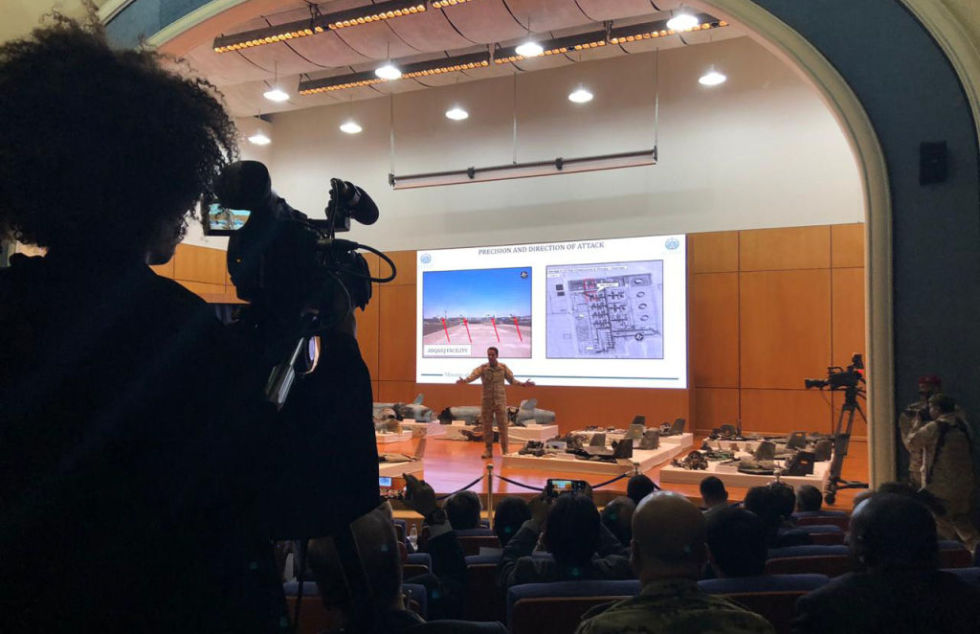More evidence points to Iranian cruise missiles, drones in attack on Saudi oilfield

Drone wreck and cruise missile wreckage from the attack on the Aramco Abqaiq oil refinery is displayed during a Saudi Arabian Ministry of Defense news conference in Riyadh on Wednesday, Sept. 18, 2019. [credit: Vivian Nereim/Bloomberg via Getty Images ]
Debris gathered from the drones and missiles used to attack an oil field and refinery in eastern Saudi Arabia increasingly lends credence to US and Saudi accusations that Iran was in some way behind the attacks. Other evidence presented thus far also suggests that the attacks may have been launched from Iran rather than Yemen, as the leadership of the Houthi militia fighting Saudi Arabia there has claimed.
A total of 25 drones and missiles were used in the attack. The missiles appear to have been identical to the Quds-1 cruise missile revealed by Ansar Allah (the Houthi militia) in a weapons display on July 7. The drones were delta-winged, propeller-driven unmanned aircrafts with stabilizer fins at the tips of each wing.
Quds it be?An Ansar Allah video of the unveiling of the Quds-1 cruise missile and other Houthi drones and weapons on July 7, 2019.
The Quds-1 is a smaller missile than the Soumar-Iran's clone of a Soviet-era cruise missile obtained from Ukraine in 2001-and its latest iteration, the Hoveyzeh. The Quds-1 uses what appears to be a Czech-built turbojet engine, the PBS Aerospace TJ100 (which PBS advertises as "especially suitable for unmanned aerial vehicles") stuck onto its upper fuselage for propulsion.
Read 8 remaining paragraphs | Comments